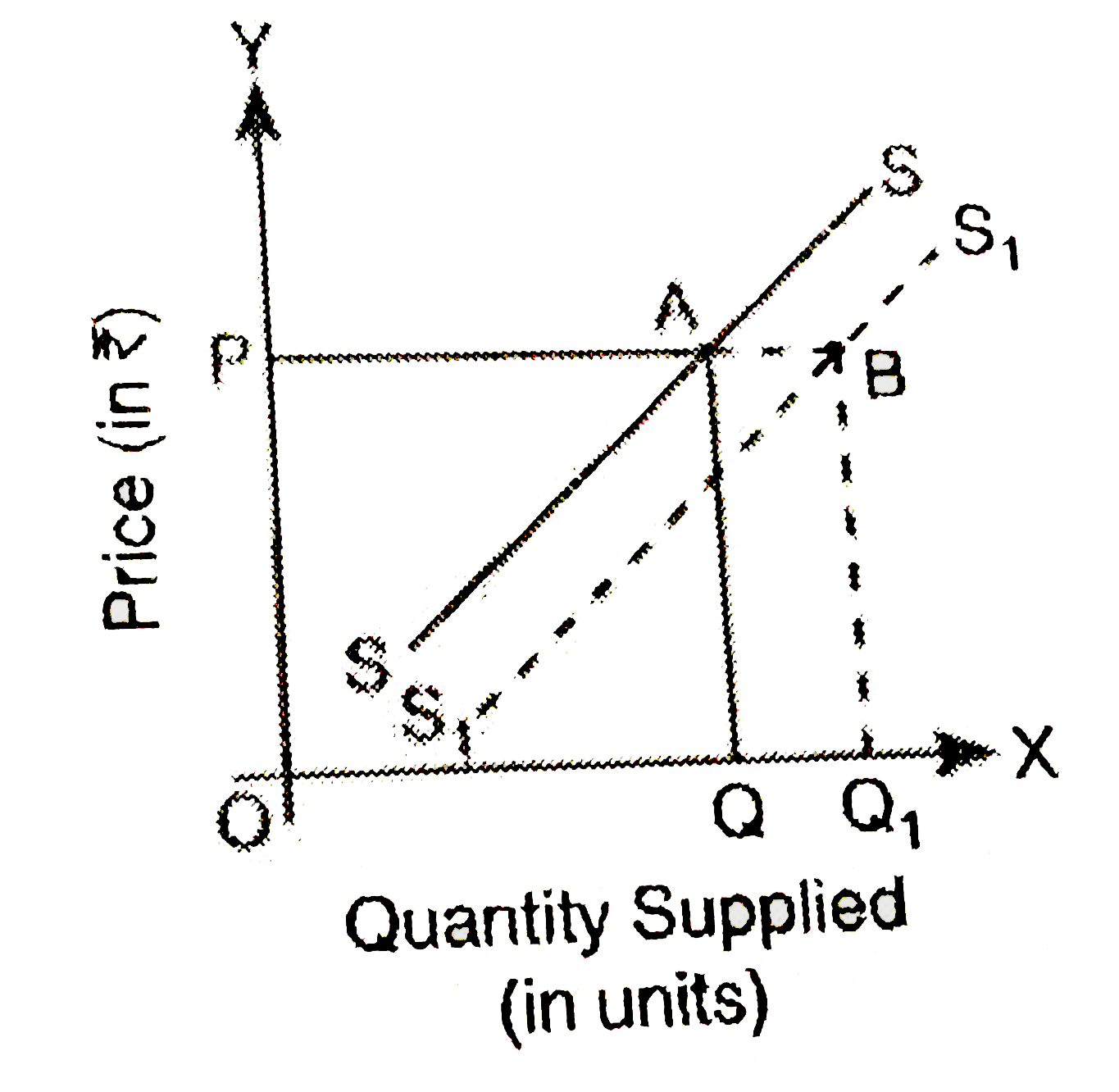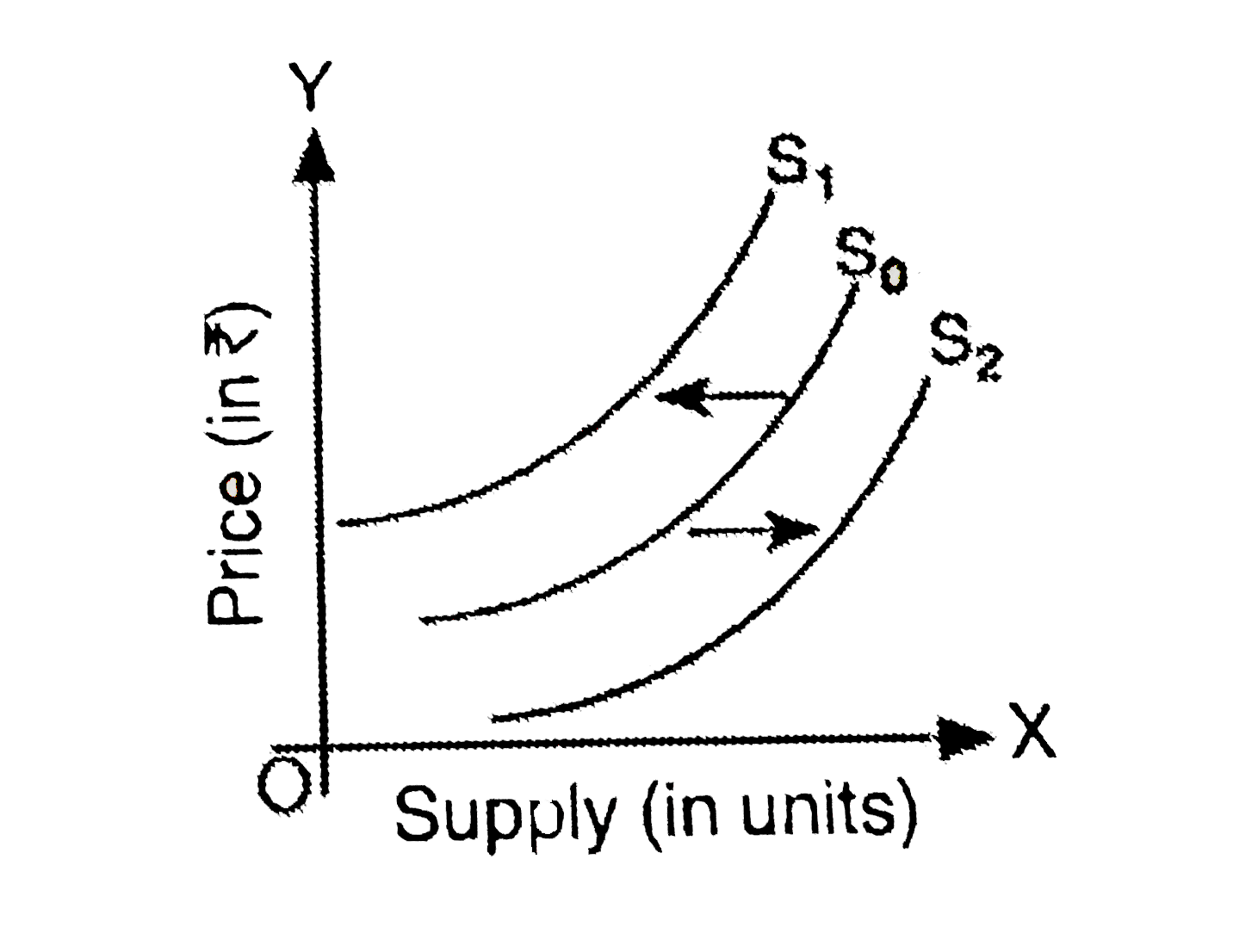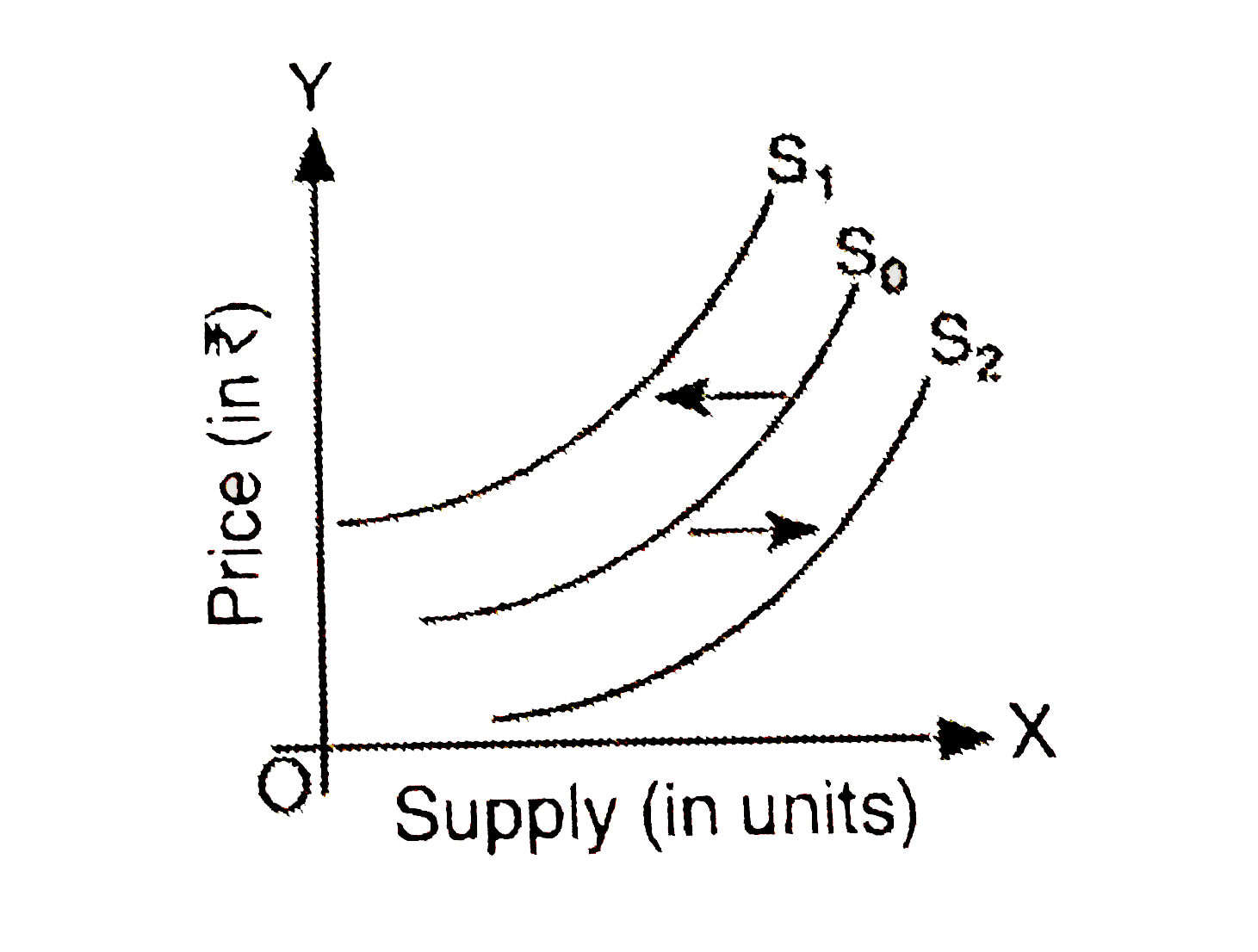The following supply curves shits from SS to S1S1 due to:

Decrease in Taxes
Upgradation of techology
Fall in the price of inputs
All of the above
The correct Answer is:D
all of the above situation leads to increase in supply and hence a rightward shift in supply curve.
Topper's Solved these Questions
- BOOK - SANDEEP GARGCHAPTER - SUPPLY EXERCISE - VERY SHORT ANSWER TYPE QUESTIONS37videos
SUPPLY
- BOOK - SANDEEP GARGCHAPTER - SUPPLY EXERCISE - SHORT ANSWER TYPE QUESTIONS31videos
SUPPLY
- BOOK - SANDEEP GARGCHAPTER - SUPPLY EXERCISE - GUIDELINES13videos
SUPPLY
- BOOK - SANDEEP GARGCHAPTER - REVENUE EXERCISE - UNSOLVED PRACTICALS21videos
REVENUE
Similar Questions
Consider a market two firms. In the following table, columns labelled as SS1 and SS2 gives the supply schedules of frims 1 and frims 2 respectively. Compute the market supply schedule.
 View Solution
View SolutionConsider a market with two firms. The following table shows the supply schedules of the two firms: the SS1 column gives the supply schedule of frim 1 and the SS2 column gives the supply schedule of firm 2. Compute the market supply schedule.
 View Solution
View Solution
Knowledge Check
- Question 1 - Select One
The supply curve of a given commodity is given to be S0. On the basis of this diagram, answer the following questions:

Movement form S0 to S1 is termed as :AConstractin in SupplyBExpansion is SupplyCDecrease is supplyDIncrease in supply - Question 2 - Select One
The supply curve of a given commodity is given to be S0. On the basis of this diagram, answer the following questions:

Movement from S0 to S2 is caused by :AIncrease in price of given productBIncrease in the price of the inputsCTechnological UpgradationDDecrease in price of given product - Question 3 - Select One
Considering the genetic basis of self incompatibility which of the following is correct. Male plant is S1S3 and female plant is S1S2
A B
B C
C D
D
Compute market supply schedule. In the following table, columns labelled SS1 and SS2 give the supply schedules of firm 1 and 2 respectively
 View Solution
View SolutionLet S1,S2 , …. Be squares such that for each n≥1 the length of a side of Sn equals the lengths of a diagonal of Sn+1 . If the length of a sides of S1 is 10 cm, then for which of the following values of n is the area of Sn less than 1 square cm ?
View SolutionLet S1,S2 , …. Be squares such that for each n≥1 the length of a side of Sn equals the lengths of a diagonal of Sn+1 . If the length of a sides of S1 is 10 cm, then for which of the following values of n is the area of Sn less than 1 square cm ?
View SolutionLet S1,S2 , …. Be squares such that for each n≥1 the length of a side of Sn equals the lengths of a diagonal of Sn+1 . If the length of a sides of S1 is 10 cm, then for which of the following values of n is the area of Sn less than 1 square cm ?
View SolutionLet S1,S2…., be squares such that for each n≥1 , the length of a side of Sn equals the length of a side of Sn equals the length of a diagonal of Sn+1. If the length of a side S1 is 10 cm, then for which of the following value of n is the area of Sn less than 1 sq cm ?
View Solution

